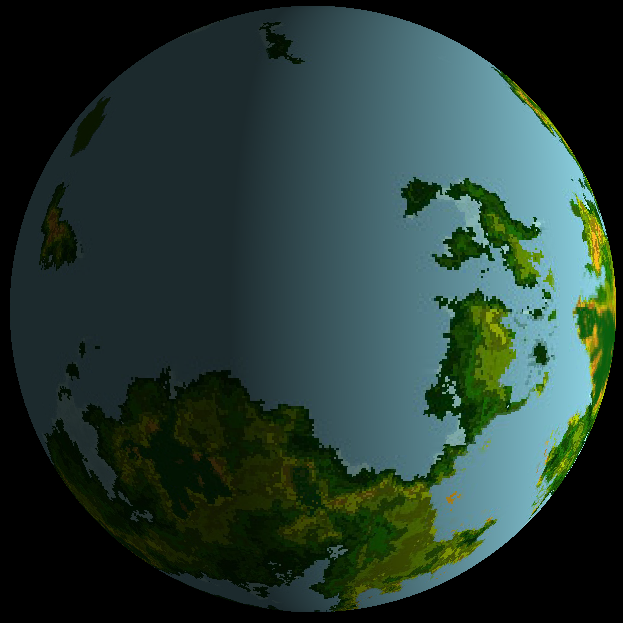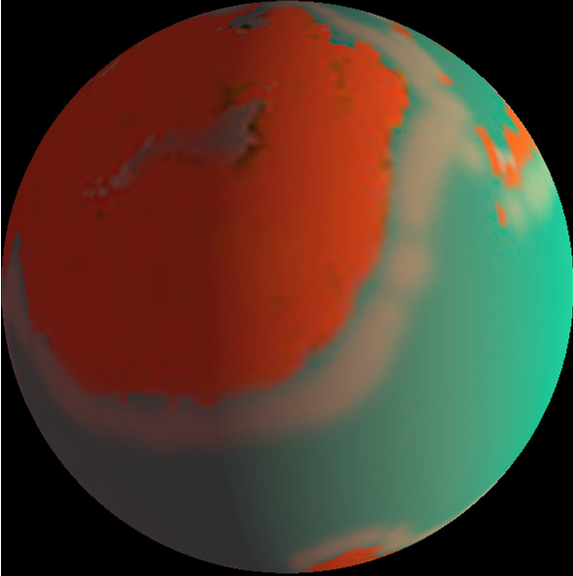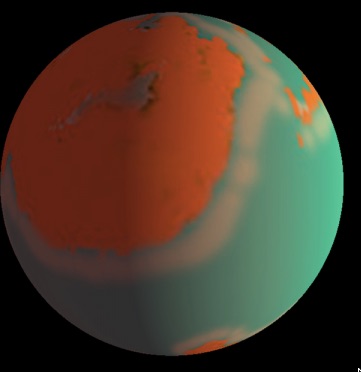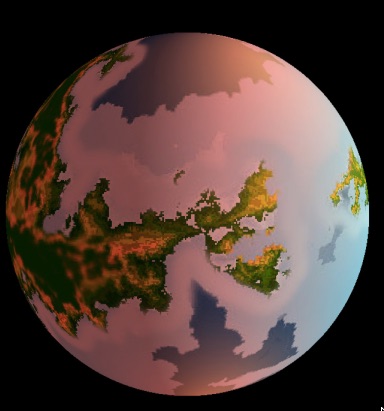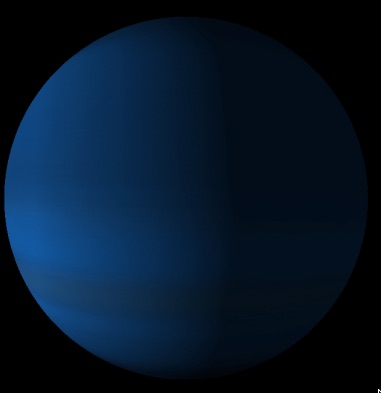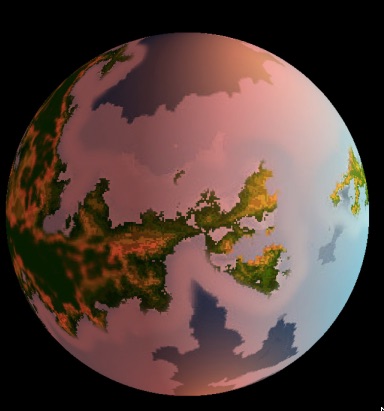
(Imaginary Image of K2-3d Fuka Takagi, Hina Bando & Yosuke A. Yamashiki)
K2-3 (also called EPIC 201367065) is an M-type star with a surface temperature of 3951 K, and a mass and radius about 0.6 times that of our sun. It is located about 147 light years from the Earth. The K2 mission (the second mission by the Kepler Space Telescope) observed the star for any transiting planets present. The mission reported the existence of three planets in 2015, and additional observations have been made, as well as published papers in an attempt to determine the planetary parameters with MUSCAT and other instruments using the Okayama 188cm telescope.
The two closest planets that were discovered, K2-3b and K2-3c have radii of 2.1 and 1.7 times that of the Earth, respectively, and orbital periods of 10.1 and 24.6 days around the host star. They are classified as super-Earths, which are defined as planets with masses and radii several times that of the Earth.
The third planet discovered, K2-3d, has an orbital period of 44.6 days with a radius 1.51 times that of Earth. It is located at 0.21 AU, which is much closer to its host star than the distance between our sun and Earth (1 AU). However, because the star is much cooler than our own sun, K2-3d is classified as being near the inner boundary of the habitable zone.
The researchers of the paper believe that K2-3d could be located at the boundary between where rocky planets similar to Earth exist and slightly larger planets rich in volatile elements, so it is a possibility that liquid water could be present on the surface.
(Yuta Notsu)
Journal Articles:
1.) Spitzer Observations of Exoplanets Discovered with The Kepler K2 Mission
2.) GROUND-BASED TRANSIT OBSERVATION OF THE HABITABLE-ZONE SUPER-EARTH K2-3D
WEB Articles:
1.) Potentially habitable super-Earth K2-3d observed transiting parent star
2.) Timing the Shadow of a Potentially Habitable Extrasolar Planet Paves the Way to Search for Alien Life
3.) K2-3d: Ground-Based Telescope Observes Super-Earth Transiting Bright Star


